Augmented reality (AR) glasses, much like this fine pair of XREAL Air 2s, could so easily become a flash-in-the-pan gimmick if launched just a handful of years ago.
In fact, they were and they did. Google Glass came out almost a decade ago, but the world shrieked in horror over privacy concerns, and the term ‘glassholes’ was ubiquitously coined to honor the few that wore a pair in public.
The world simply wasn’t ready for this technology, nor was this technology ready for the world. However, far from the nostalgic utopia that was 2014, the year 2023 is a primordial AR ooze, begging for the right pair of eyewear to sprout legs and make its way to the shore.
Are XREAL’s Air 2 AR glasses the next evolutionary step in these devices dominating the mainstream? Let’s find out.
XREAL Air 2 Glasses: Price and availability
The XREAL Air 2 AR glasses are available for $399 from XREAL.com, with Amazon listings to follow.
That’s a considerable amount to put down on a product like this, similar in expense to a 50-inch TV. However, a 50-inch TV is much harder to carry around on your face, and the Air 2 touts a 130-inch display to feast your eyes on at all times.
Comparing the Air 2’s price tag to other smart glasses makes it a much easier hurdle to climb. The Rokid Max AR Glasses are also available for $399, though they don’t feature the same classic wayfarer design. The new Ray-Ban Meta smart glasses are available for just $299, but they lack the AR capabilities of the Air 2 — designed for social media as opposed to entertainment or productivity.

Of course, there are also VR/AR headsets to contend with, which offer superior performance, a depth of content, and superior tracking options for hands and movement. The Meta Quest 3 is available for $499 with 128GB of storage, but it’s far bigger, heavier, and unwieldy for casual wear.
Overall, the XREAL Air 2’s cost can be justified — especially given its quality build, impressive comfort, well-specced displays, and how new this tech is to the market. However, I do look forward to these prices dipping and becoming more accessible to wider audiences.
XREAL Air 2 Glasses: Design
XREAL’s Air 2 AR glasses adopt the wayfarer-esque design of many XR specs, and they look damn good in doing so. While a little chunkier in places, the Air 2 pulls off a sleek and modern rendition of the classic sunnies. The added girth also helps to balance the frames out — evenly distributing the Air 2’s 75-gram (2.64-ounce) mass.
Another tweak to the familiar Wayfarer design is a 3-step adjustable rake system bridging the temples to the rims. These hinges offer a fair amount of flex, which is ideal for accommodating various facial strictures without having to adjust by hand. The 20-degree flexibility results in a snug fit that doesn’t cause any compression to the sides of your head — even over prolonged use.

The polarized lenses are comfortable to look through, and the tilted projection lenses are easy to tune out of your vision after a short while. However, while XREAL’s frames can fit quite snugly against your brow, there’s a considerable overhang between the bottom of the rims and your cheek.
This allows the tilted lenses to catch reflections in brighter environments. Thankfully, if you have the displays activated it will flush out those reflections fairly well and make them practically unnoticeable.
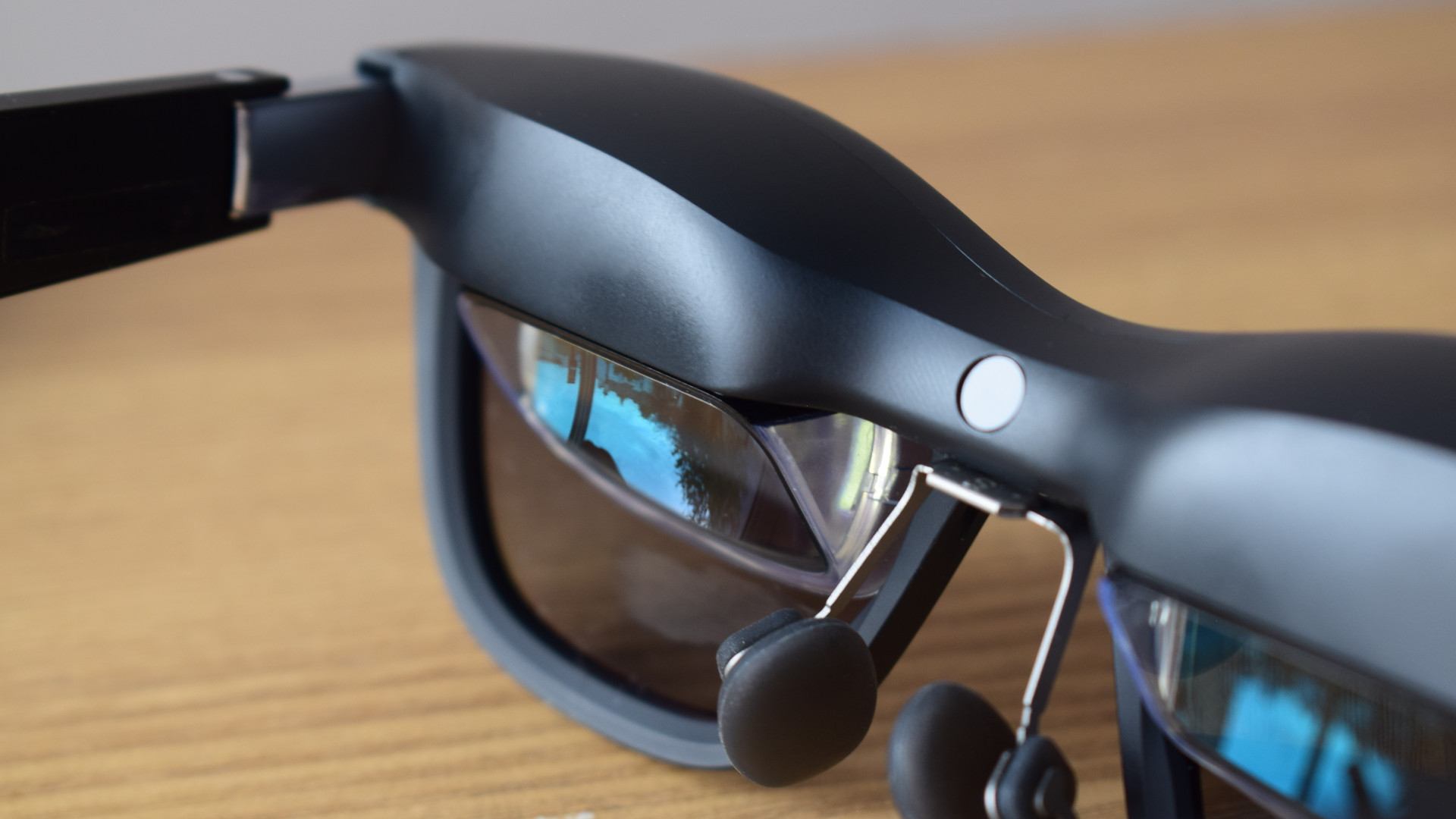
If you’re a glasses wearer, you can opt to invest in prescription lens inserts ordered through XREAL partners, or the frames offer a decent enough reach to fit over your regular glasses. However, this can push the already jutting frames further from your face, resulting in the glasses seeming more cartoonishly bug-eyed than usual.
XREAL Air 2 Glasses: Setup
Setting up the XREAL Air 2 glasses is as simple as connecting the frames to any DisplayPort over USB-C device such as a laptop, tablet, or smartphone with the supplied cable. The USB-C to USB-C cable connects to the end of the Air 2’s left-hand temple tip, letting the cable comfortably drop behind your ear.
If you use a non-DisplayPort USB-C device then you’ll need a separately sold XREAL Adapter ($49). This adapter allows HDMI connections to funnel through to the Air 2’s displays, but can also be used with an Apple Lightning Digital AV adapter to link with iPhone devices.

Once connected, the Air 2s will spring to life and mirror your screen, providing you with a floating virtual window of 120 inches at an approximate distance of six meters that follows your pointed direction.
It’s a cakewalk to set up, with an optional app available on Android and macOS called Nebula that allows you to activate AR space. This is a virtual overlay of a workspace where you can interact with an AI browser. However, you can’t access your regular apps from within this feature, only a limited number of XREAL AR apps.
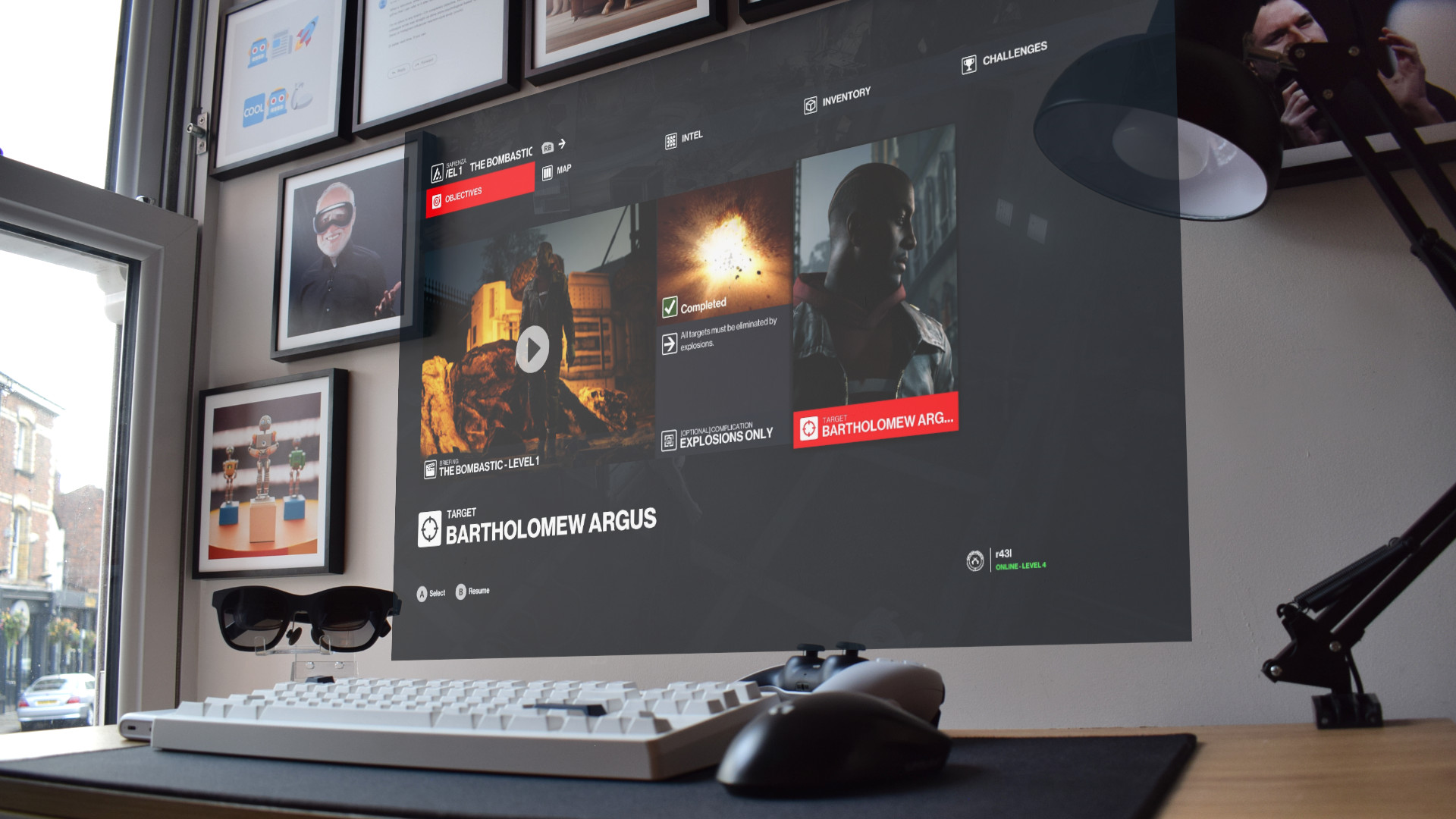
XREAL Air 2 Glasses: Display
XREAL’s displays are more projector than panel, with two Sony 0.55 Micro-OLED displays beaming images into the tilted secondary lens of the frames. If you’re familiar with the Pepper’s ghost illusion, then you’ve already unlocked the mystery behind the magic of how these frames work.
Once firing, each eye is treated to a high-contrast (100,000:1), 108% sRGB, 1080p image that is razor sharp, though it begins to blur a little around the edges of the lens. Pictures are otherwise very crisp, vivid, and impressively bright with up to 500 nits of peak brightness. I found the Air 2s to work great under many lighting conditions, but then again, I live in the U.K., and the sun is a more alien concept here than flying saucers.
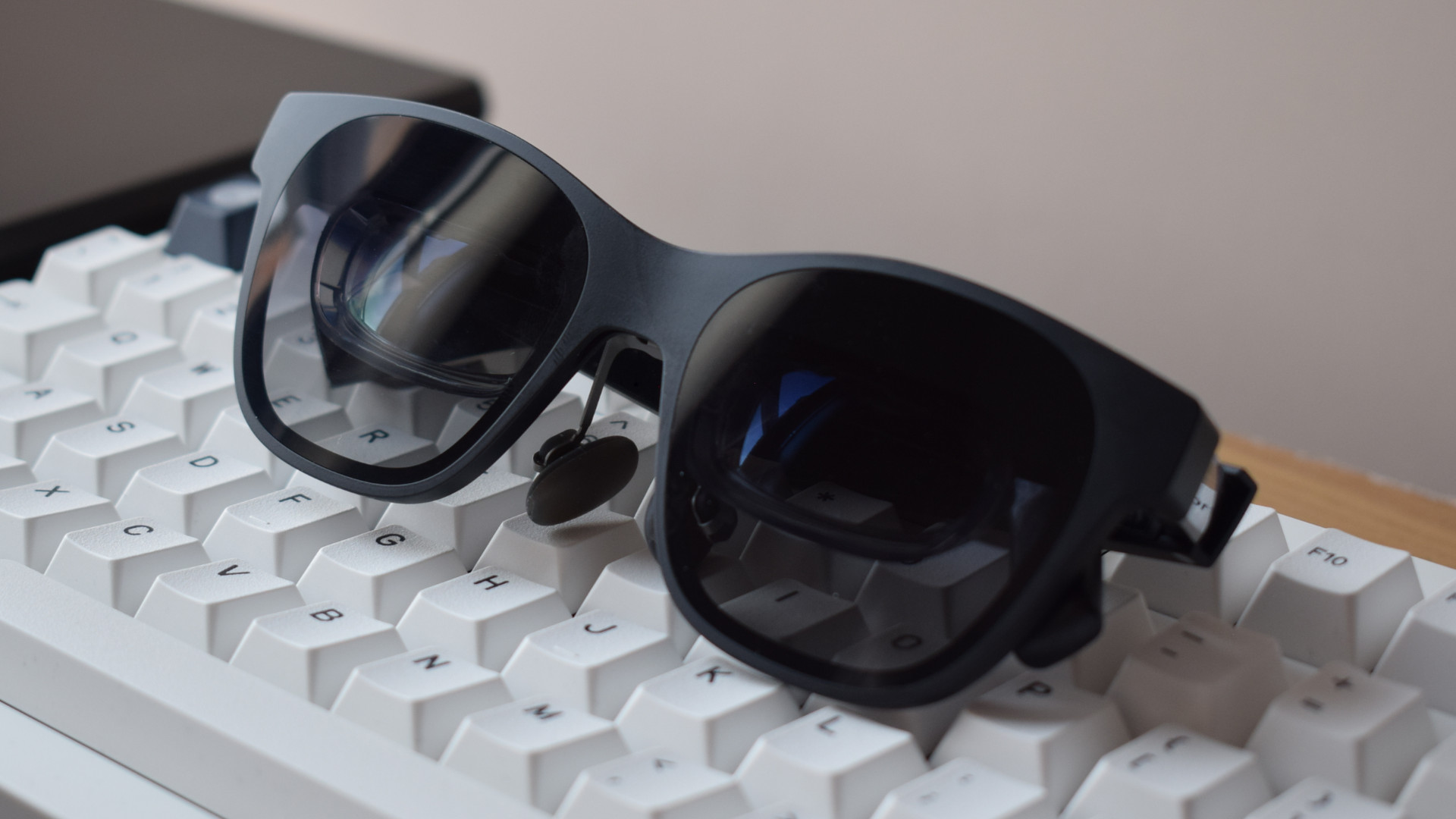
Thankfully, XREAL bundles a light shield in the box, which clips onto the front of the frames and blacks them out, allowing you a flat black backdrop to enjoy your content on. It’s great for immersion in games, with each ultra-low latency display affording a 120Hz refresh rate that ensures a silky smooth visual experience.
I found it to work best with first, and third-person titles, though the former may mess with your head a little at first as you intuitively turn your neck and wonder why the game doesn’t respond. However, with your focus primarily on the center of the image, you’ll notice far less of the lens blur toward the outside edges of the projection.
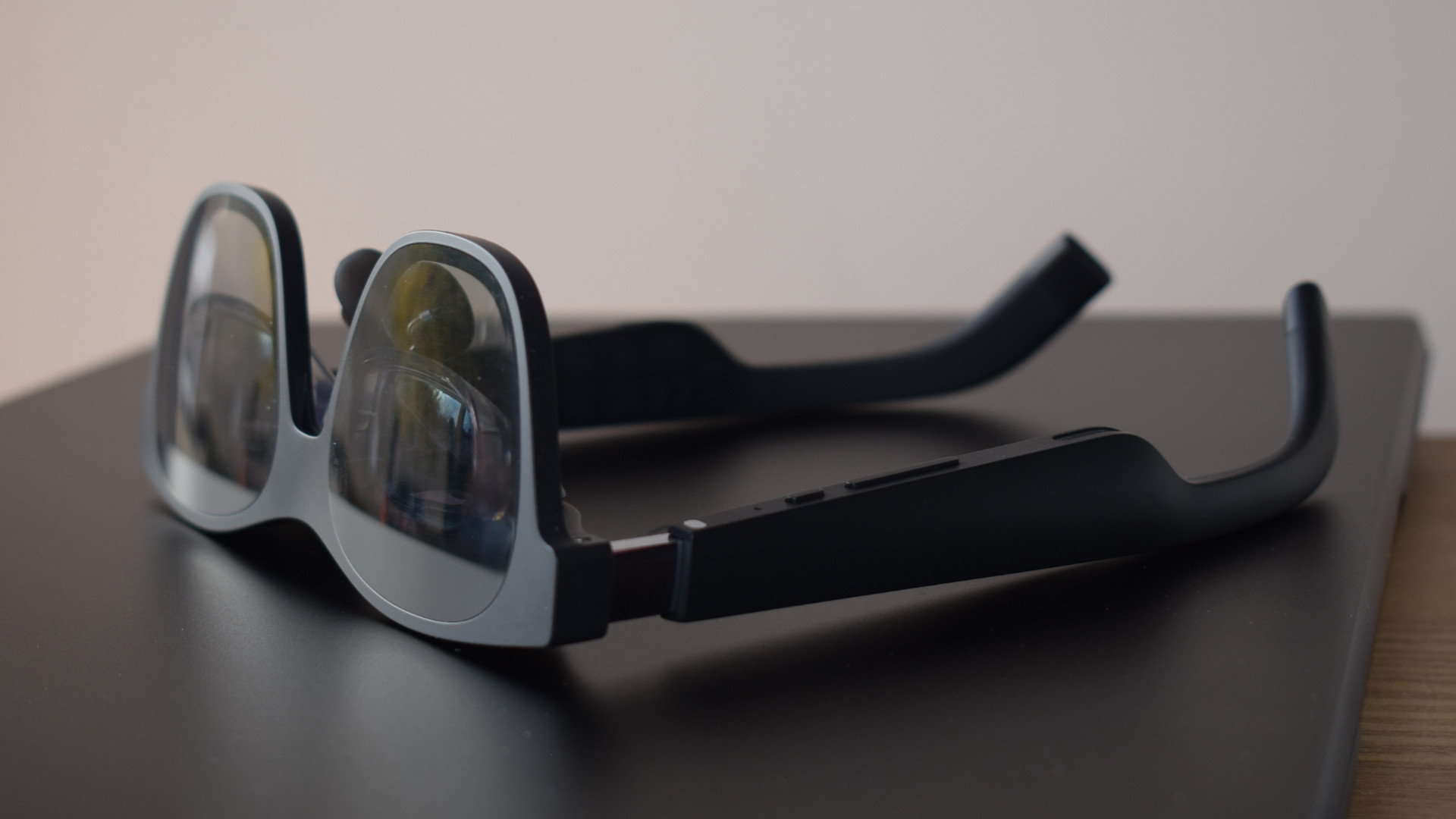
From Call of Duty to Hitman 3, and through the neon streets of Cyberpunk 2077’s Night City, I became enraptured by the Air 2’s vivid colors and brightness. While limited to just 1080p it still felt like a near-iMax experience — leaving me completely consumed by each new virtual world I stepped into.
XREAL Air 2 Glasses: Sound
Aiding that immersion was the XREAL Air 2’s surprisingly impressive sound quality. The temple stems of the glasses each include an open-ear sound system that does a solid job of delivering rich, spatial soundscapes.
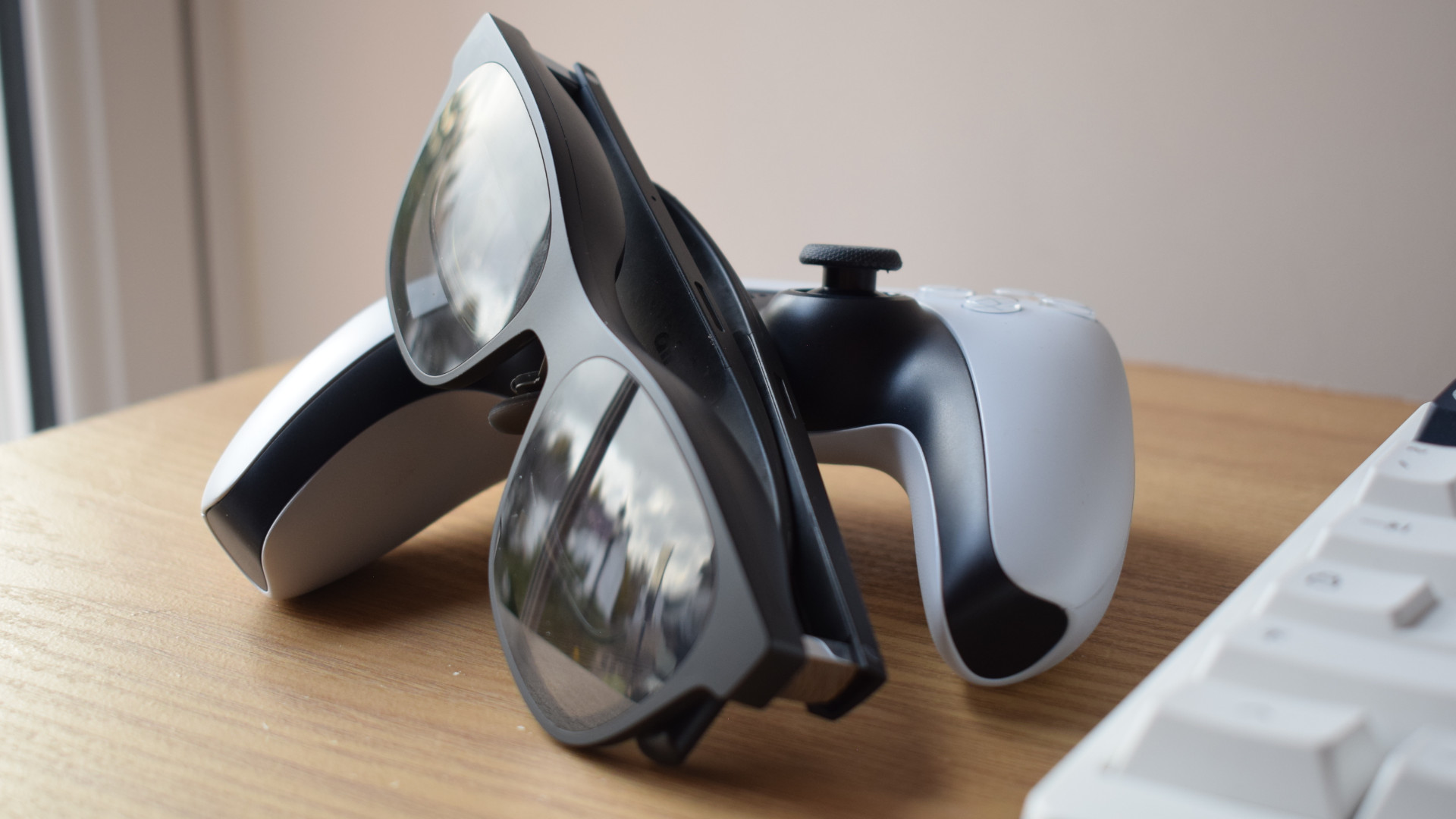
The directional sound system minimizes external noise while maximizing the effect when worn. The results can be mesmerizing at times, especially as you wander through crowds and experience their chatter naturally flow into your ear, or as you become surrounded by the sound of a roaring cockpit, wild jungle, or the howling winds of a desert storm.
Of course, you can’t fully cancel out external sounds with this system as easily as you can block out light with the included light shield, but you can disable the speakers and use earbuds or headphones if that’s what you prefer.
Bottom line
XREAL has invested considerable time and effort into improving upon its initial offering in the NREAL Air. Improved sound, picture, and comfort combine to make the Air 2s another AR success story, and a worthwhile upgrade to an already brilliant pair of bifocals.
However, some of the most promising features surrounding XREAL’s AR tech are locked behind an additional purchase of the XREAL Beam ($119) — A sort of AR preamp that improves connectivity and allows for spatial display options the glasses alone can’t offer.
That being said, I was still thoroughly impressed by how useful, comfortable, and effortless the XREAL Air 2 glasses were to use. They were fun too, offering fantastic soundscapes and rich immersion in games and movies. It even worked well as a productivity tool, albeit a much better one when paired with the separately sold XREAL Beam due to its spatial display modes.
If you’re all in on AR and want one of the best mixed reality frames you can get your hands on, then these are the smart glasses you’ve been looking for. Pair it with the XREAL Beam and you have a genuinely impressive combination of tech that could reinvent how you interact with your devices.
But, if you’re waiting for a true mainstream pair of frames with the full experience on board, then it could be best to wait for XREAL to add the functionality of their Beam accessory to the core product. Until then AR’s primordial ooze of potential might just need a year or two more to stew.
Source link
 notebook.co.id informasi dan review notebook laptop tablet dan pc
notebook.co.id informasi dan review notebook laptop tablet dan pc